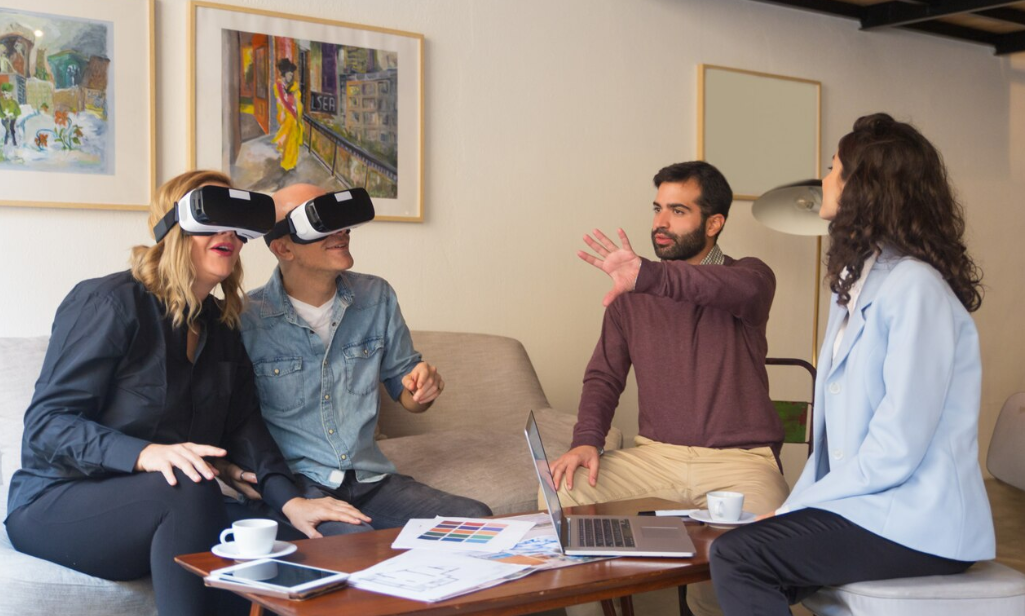The concept of digital twins has gained significant traction in recent years, especially within industries like manufacturing, healthcare, and urban planning. This advanced technology allows real-world objects and systems to be mirrored by digital replicas, enabling unprecedented levels of control, monitoring, and optimization. But what exactly are digital twins, and how are they revolutionizing industries by controlling real machines?
What Is a Digital Twin?
A digital twin is a virtual replica of a physical object, process, or system. This digital model simulates real-world conditions in real-time, reflecting every change or modification that happens in the physical version. The model is powered by data collected from sensors and IoT devices embedded in the physical object. This data is then used to monitor performance, predict future behaviors, and optimize operations.
The concept of digital twins is rooted in the idea of cyber-physical systems, where digital systems interact with physical ones to make decisions and take actions. This connection allows virtual twins to not only reflect the real-world object but also influence or control it, creating a dynamic relationship between the virtual and the physical.
The Role of Digital Twins in Industry
1. Manufacturing and Production
In the manufacturing sector, digital twins are used to monitor the health and performance of machines and equipment. Sensors attached to physical machines collect data on everything from temperature and vibration to speed and efficiency. This information is then fed into the digital twin model, where it can be analyzed and visualized.
- Predictive Maintenance: One of the most powerful uses of digital twins in manufacturing is predictive maintenance. By analyzing the digital replica’s performance, businesses can identify potential issues before they become problems, thereby reducing downtime and repair costs. For example, if a digital twin detects an anomaly in a machine’s behavior, an alert is triggered to notify maintenance teams, who can address the issue before a breakdown occurs.
- Optimization: Digital twins also allow for the optimization of production lines. Manufacturers can simulate different scenarios in the virtual model to test how changes, such as adding new machines or altering workflows, might affect the overall efficiency. This helps in making data-driven decisions that can boost productivity while minimizing waste and costs.
2. Healthcare: Personalized Medicine
In healthcare, digital twins are being used to create virtual models of patients’ bodies or specific organs, allowing for more precise treatment and monitoring.
- Personalized Treatment: By creating a digital twin of a patient’s heart, for instance, doctors can simulate how different treatments (e.g., surgery, medication, or lifestyle changes) will impact the organ before performing any actual procedures. This provides doctors with a more accurate prediction of how a patient will respond, improving treatment outcomes and reducing risks.
- Remote Monitoring: Digital twins are also enabling remote patient monitoring. By collecting real-time data from medical devices and sensors, doctors can track a patient’s health metrics and intervene when necessary. This technology can be especially beneficial for chronic disease management, as it allows for continuous monitoring without the need for frequent hospital visits.
3. Smart Cities and Urban Planning
The concept of digital twins is making its way into urban planning and smart cities. By creating virtual models of entire cities, planners and government officials can simulate traffic patterns, energy usage, and other factors to optimize the way cities function.
- Urban Simulation: Using data from sensors embedded throughout a city, digital twins provide real-time insights into traffic congestion, air quality, energy consumption, and more. This allows cities to make informed decisions on how to manage resources, improve infrastructure, and reduce environmental impact.
- Disaster Response: Digital twins are also being used to simulate emergency scenarios, such as natural disasters, to help cities plan better responses. By running simulations of flooding, fires, or earthquakes, planners can create more effective evacuation routes, allocate resources efficiently, and reduce potential damage.
4. Energy and Utilities
In the energy sector, digital twins are being used to monitor and optimize the performance of power plants, renewable energy systems, and entire grids. By mirroring the physical infrastructure in a digital model, operators can predict system performance and optimize energy production.
- Energy Efficiency: Digital twins help utility companies monitor real-time energy consumption and identify areas where improvements can be made. For example, a digital twin of a solar farm can provide detailed insights into how much energy each panel is generating, allowing for adjustments to maximize efficiency.
- Grid Management: For power grids, digital twins offer a way to simulate and manage electrical flow, making it easier to balance supply and demand in real time. This leads to improved reliability and the ability to quickly address faults or disruptions in the grid.
How Digital Twins Control Real Machines
One of the most fascinating aspects of digital twins is their ability to control real machines. By linking the virtual model directly to the physical object, businesses can make real-time adjustments and improvements to operations.
- Real-Time Feedback: In a connected environment, the digital twin can send commands to the physical machine based on the analysis of its performance. For example, if the digital twin detects that a machine is running inefficiently, it can automatically adjust certain parameters—like speed, temperature, or pressure—on the physical machine to optimize performance.
- Autonomous Control: In more advanced use cases, digital twins can enable autonomous operations. For instance, in an autonomous manufacturing system, a digital twin could control an entire production line, adjusting the speed of machines, ordering new materials, or even directing robots to perform specific tasks—all based on real-time data collected from the physical systems.
- Simulation and Testing: Before making changes to a real-world machine, engineers can use the digital twin to test different configurations and settings. By experimenting with the virtual model first, they can avoid costly mistakes and ensure that adjustments will have the desired effect on the physical machine.
The Future of Digital Twins
As technology continues to evolve, the potential for digital twins is limitless. With the rise of 5G networks, artificial intelligence (AI), and machine learning, digital twins will become even more intelligent, enabling greater levels of autonomy and decision-making.
In the future, it’s likely that digital twins will extend beyond industrial machines and healthcare models, influencing everything from autonomous vehicles to personalized shopping experiences. As the physical and digital worlds continue to merge, digital twins will play a pivotal role in reshaping industries and transforming the way we live and work.
Conclusion
Digital twins are no longer a futuristic concept—they are an evolving technology that is changing the way we understand and interact with the physical world. By creating virtual replicas of real objects, businesses and industries can optimize performance, reduce costs, and even control machines remotely. As this technology advances, the potential for digital twins to drive innovation and efficiency across all sectors is enormous. From manufacturing to healthcare, energy to urban planning, the future is digital—and the digital twin is leading the way.


